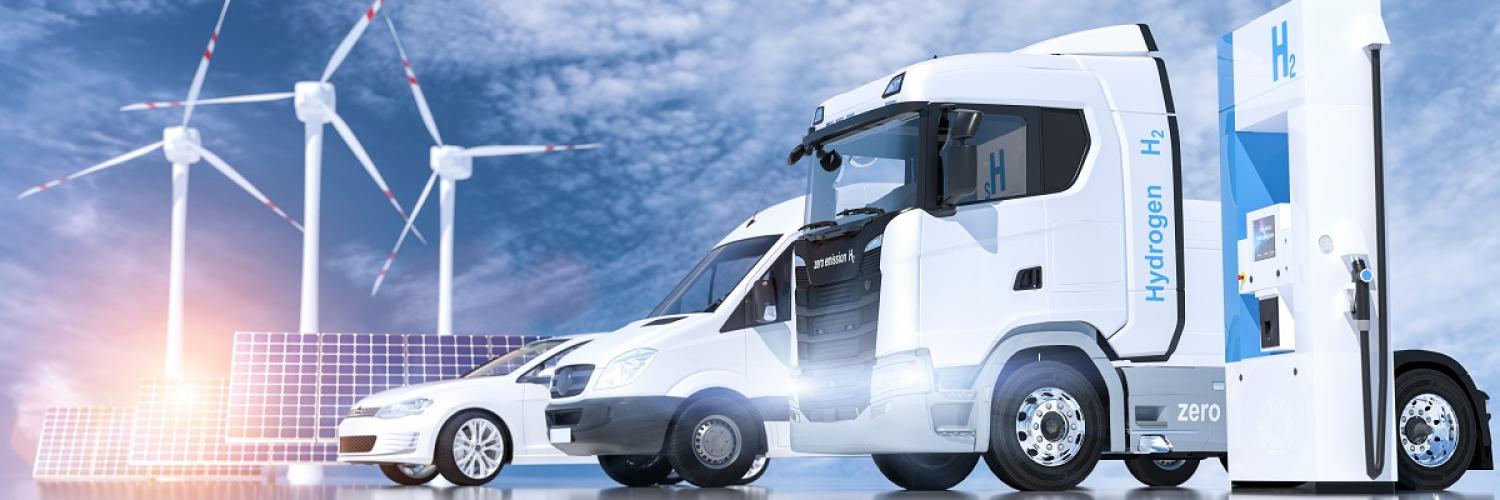Hydrogen 2021
Paris, the 15th of December
In the past few years, the idea of using Hydrogen as an energy storage medium has regained momentum for certain applications.
For many decades, Hydrogen has been considered the fuel of the future. Today, Hydrogen’s promise may finally be getting recognised as an important contributor in the fight against global warming.
Since our last article on the subject, the discussion of Hydrogen as an alternative fuel has progressed. It is today seen as a potential bridge to full electrification – in particular for the oil and gas industries.
Let's explore.
As of 2021, countries representing 70% of the world's GDP have outlined Hydrogen strategies, in some cases even providing further incentives for both infrastructure and further technological development.
In particular heavy industries - freight, agriculture, mining, and mass transportation - are looking to play a part in the new Hydrogen ecosystem.
It’s an appealing proposition for the environment: Hydrogen, or H2, can lower greenhouse gas emissions in these industries, as the only by-product from its conversion to energy is water.
But Hydrogen has to be extracted from various processes, which Bloomberg calls the "United Colors of Hydrogen".
Gray, Blue, and Green Hydrogen differentiate Hydrogen production processes and have become a point of contention for many.
Gray Hydrogen comes from the extraction of crude oil or Steam Methane Reforming (SMR) and represents around 99% of the global supply.
It has the worst environmental impact and can be turned into Blue Hydrogen if its production is accompanied by a system capturing CO2 emissions from its processes.
The second most used technique to extract Hydrogen is via electrolysis. Electricity splits water molecules into hydrogen and oxygen. If this electricity is generated by renewable energy, the Hydrogen produced is considered Green.
The European Commission estimates that €470 billion of investment is necessary for Green Hydrogen to make up 13-14% of the EU energy mix by 2050.
A lot of energy is necessary to create hydrogen from electrolysis, and a lot of energy is lost in the conversion processes, however, which makes Hydrogen not as sustainable as simply storing the energy in a battery.
So what makes Hydrogen so appealing? Hydrogen is three times more dense than conventional fuels which makes it viable as energy storage in industrial and large-scale applications, where lithium-ion batteries would still be too heavy or inefficient.
For example, long-haul freight, shipping and aircraft would need oversized batteries to operate, taking up valuable cargo or passenger space.
In these cases, Hydrogen shines as an energy storage medium. H2 tanks can quickly store energy for months and lose weight as they get depleted.
Airbus was first to announce that they are working on a trio of new plane designs that will utilise hydrogen. The company plans for commercial production by 2035 which will help the air transportation sector to become more sustainable.
Long-freight trucks have also been in the spotlight recently. Hyzon, a US company building H2 trucks, has gone public through a Special Purpose Acquisition Company and is now trading on Nasdaq.
The company boasts vehicles in operation worldwide and received some recent orders, including 154-ton rated trucks for the world's largest zinc producer.
With some setbacks, Hydrogen trucks are slowly becoming a reality, and some legacy OEMs continue to explore H2 applications for passenger cars, via Fuel Cell Electric Vehicles (FCEVs).
Toyota’s Mirai has recently been refreshed and Hyundai’s Nexo remains a viable option. But the potential for these vehicles seems more limited, and is facing an uphill battle against a flood of hundreds of new battery-electric vehicles.
Beyond the challenge of producing clean H2 at large scale, FCEVs face an even greater challenge in the deployment of infrastructure than battery-electric vehicles (BEV) did years ago: an H2 station usually costs over €400 000 and requires a series of steps in its process, some dangerous, from compression to cooling.
But the few minutes needed to fill in a tank compared to the tens of minutes currently needed to charge BEVs help FCEVs to stay as an alternative for cleaner mobility in cities, especially for fleet operators and transportation professionals.
This is the case of Hype, a French taxi firm exclusively operating FCEV Toyota Mirai, with an ambition to grow their fleet to 600 units.
Despite its almost two centuries of existence, H2 still exhibits an immaturity as energy storage for transportation purposes. The Tokyo 2020 Olympics were supposed to be a showcase for Hydrogen, but most promises fell flat.
From the whole Olympic Village, only one building was powered by H2 and one hundred Toyota H2 fuel-cell buses – which were supposed to move athletes and the public around – did not show up.
Yet, with the increasing urgency of the climate change emergency, Hydrogen is a necessary energy to power our future and limit our carbon emissions.



